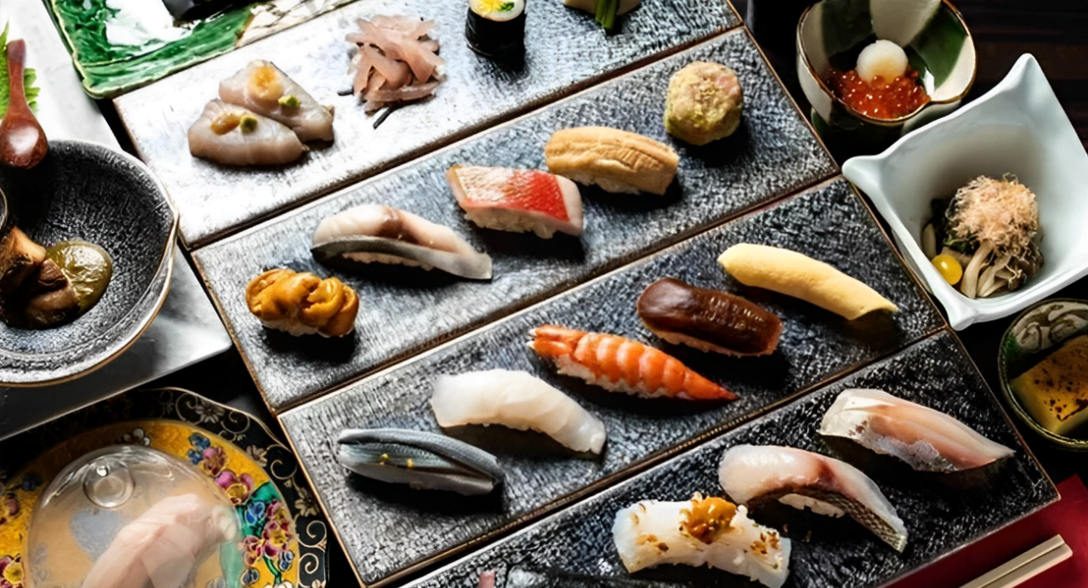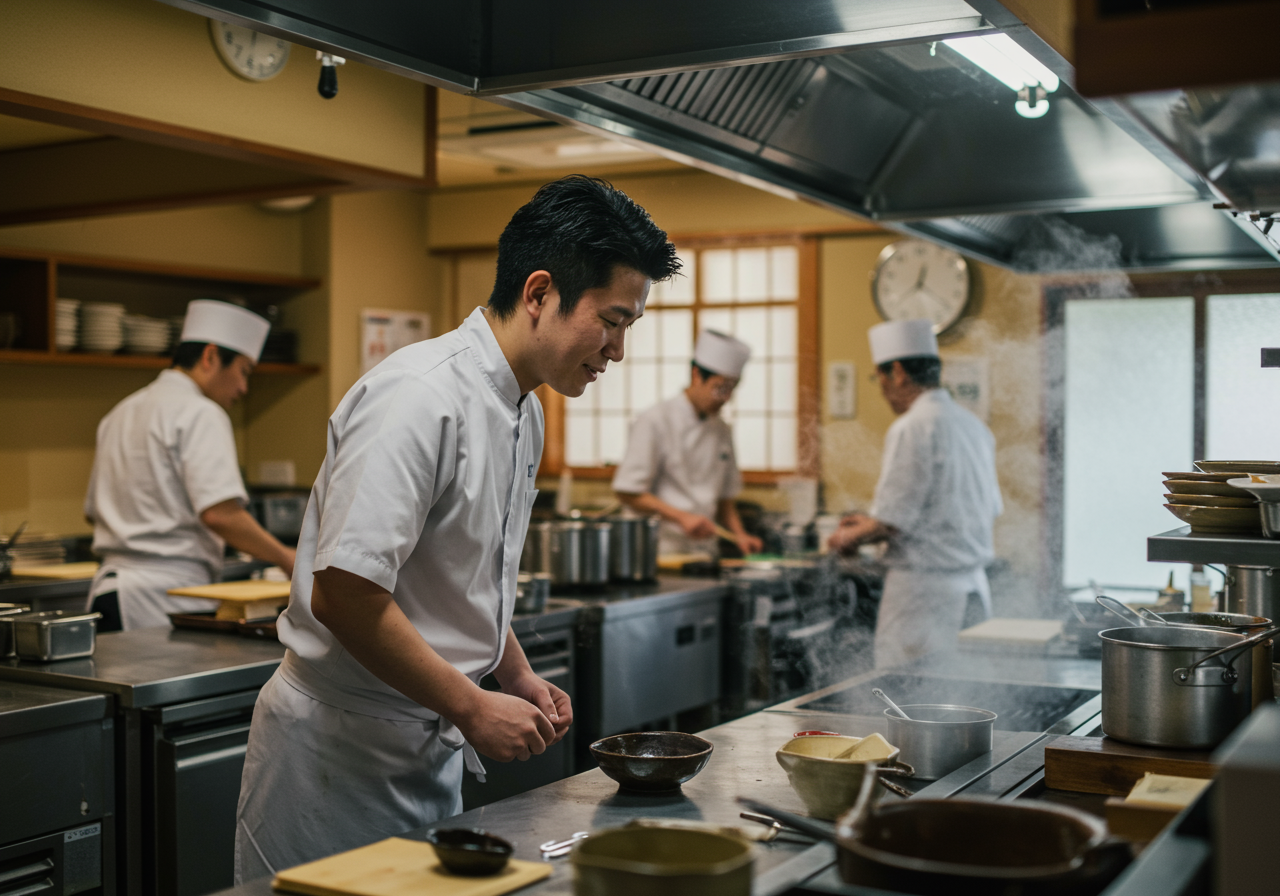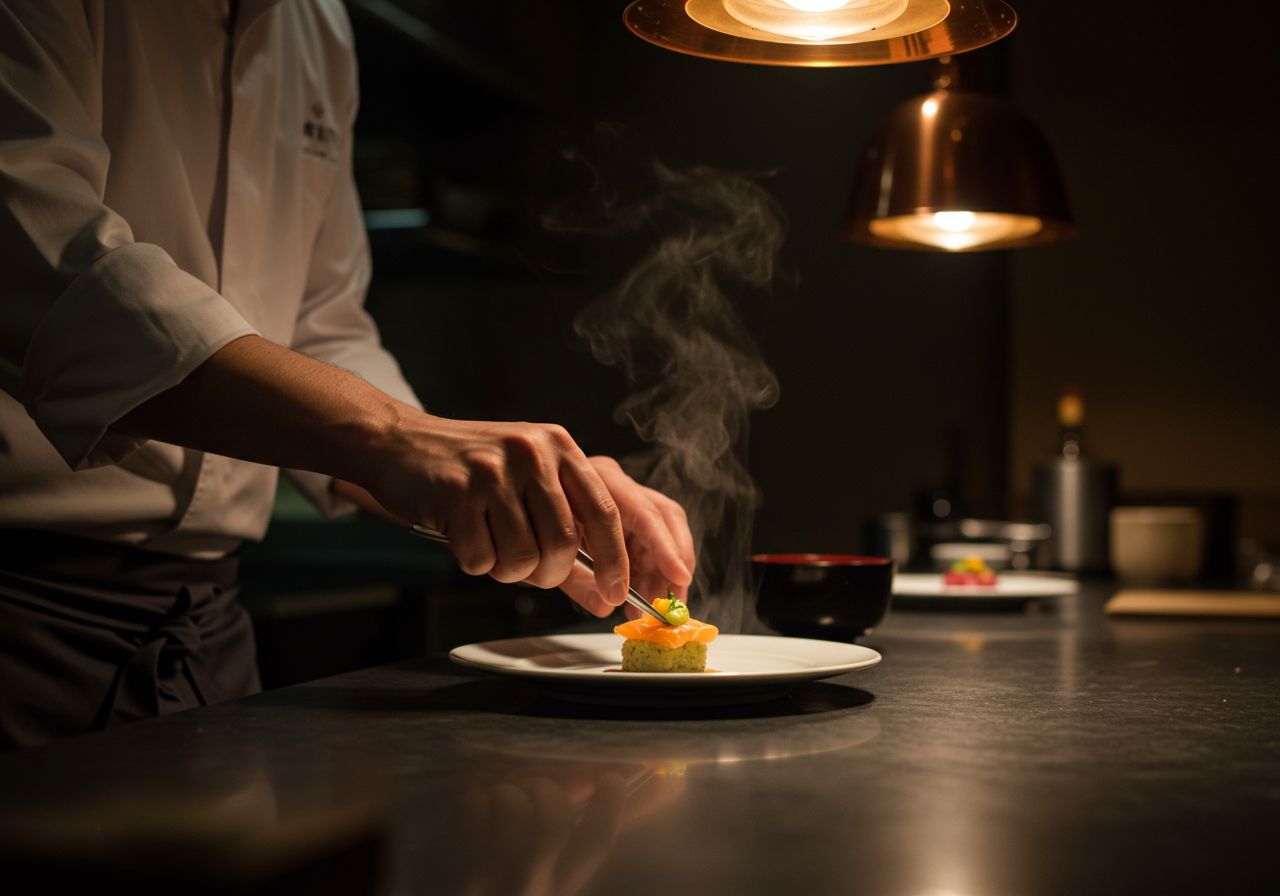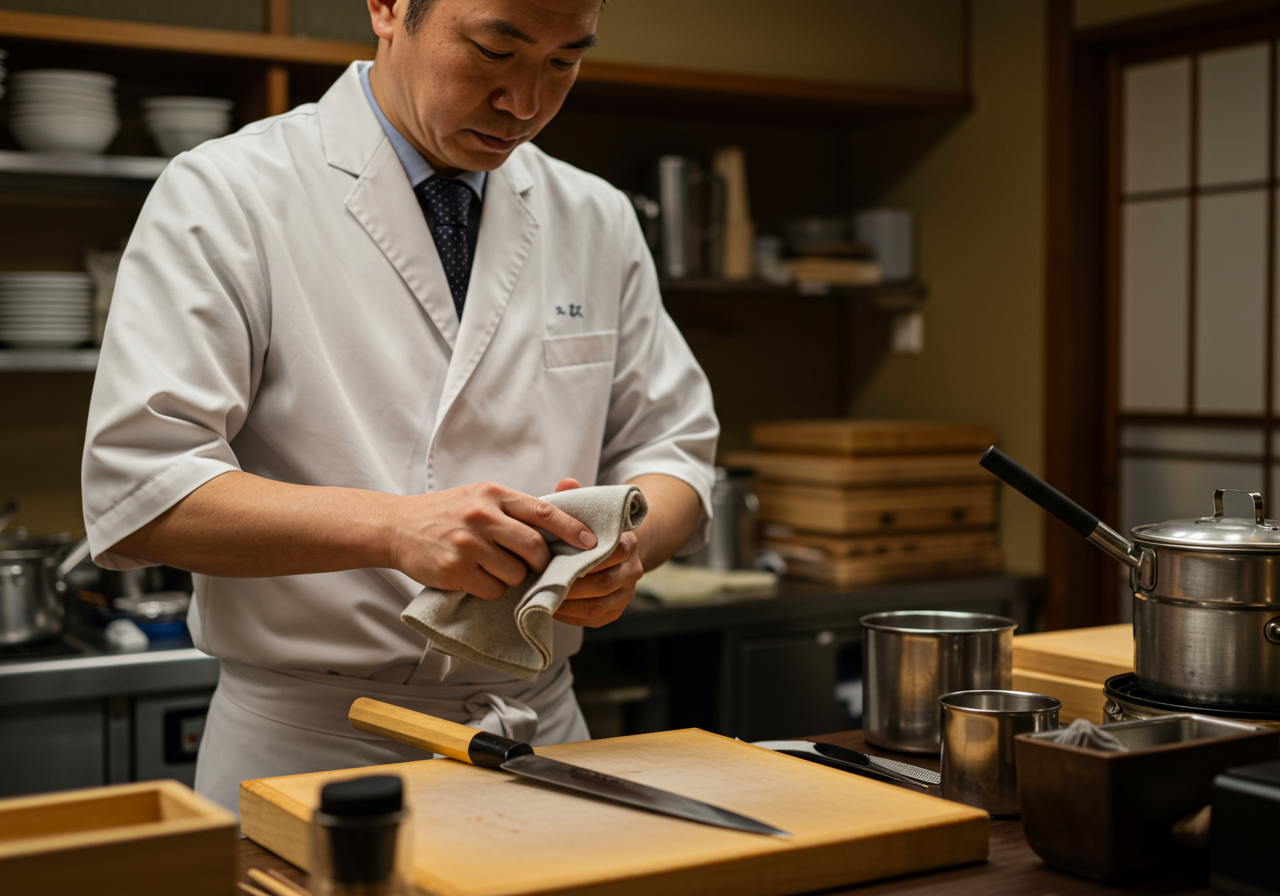
The Chef’s Code: Skill and the Attitude Toward Mastery
-
To sharpen your knife is to sharpen your spirit.
What does true mastery mean in the kitchen? It’s not just technique—it’s the spirit behind every motion. In this video, we explore the mindset of mastery: patience, repetition, humility, and the courage to keep learning. If you’ve ever wondered how to elevate your craft, this is your reminder that refining skill is inseparable from refining yourself.
-
-
When I studied at a sushi school in Tokyo—and later, through countless hours in real kitchens—I learned something that changed how I see skill.
Technique is never just the movement of the hand or the angle of the blade.
It is the mirror of the chef’s spirit.Every cut, every touch, every gesture reflects the mindset behind it.
And mastery cannot be rushed. It is born from patience, humility, and the courage to face your own limitations. -
To refine your skill is to refine yourself.
To sharpen your technique is to sharpen your spirit.True mastery is not just about “getting better”—
it is about embracing the path of endless learning.
Because in the end, what defines us as chefs is not only what we master,
but how we walk the path of mastery itself. -
1. Be a Chef of Mastery—and One Who Never Stops Learning
In the world of cooking, there is no such thing as “finished.”
No matter how skilled you become, there will always be more to learn—a higher level waiting just beyond your reach.A true master isn’t just someone with refined technique.
More than that, it’s someone who continues to challenge themselves, day after day, striving to improve with every cut, every flame, every dish. -

From how you hold your knife, to how you adjust heat, to how you engage with ingredients—
it’s the constant pursuit of precision that defines excellence.The moment you think “I’ve got it,” your growth stops.
That’s why the very best chefs are those who, no matter their experience, never stop learning. -
Courtesy, empathy, and a sense of responsibility—these are qualities that naturally appear in your daily actions.
Building trust as a person comes before building a name as a chef.
That is the first step to becoming a chef who is loved for a lifetime. -
2. Become a Chef Whose Skill Captivates Others
In the world of cooking, flavor alone is not everything.
There is also power in how you move—how your presence and precision can quietly impress everyone around you.The finest chefs don’t just create great food—they move with beauty and purpose.
Their gestures are smooth, their rhythm steady, and their focus unshakable.
Even without speaking, they earn the trust of those who watch them. -

Skill, in this sense, goes beyond taste.
It’s also about the way you carry yourself—the grace, confidence, and intention behind every action.Ask yourself:
“When others watch me work, do they feel something?”
That subtle impact—built through thousands of small choices and moments—is what makes your craft truly captivating. -
3. The Foundation of Knife Skills: Katsuramuki and Tsuma-uchi
If you want to master the knife in Japanese cuisine,
everything begins with two core techniques: katsuramuki and tsuma-uchi.Katsuramuki is the art of peeling a daikon radish into a long, paper-thin sheet.
It requires perfect control of blade angle, pressure, and the delicate coordination between both hands.
It is one of the most fundamental forms of knife work—and one of the most telling.Tsuma-uchi, on the other hand, refers to the fine garnish cuts that often accompany sashimi.
Here, beauty and precision become part of the taste.
It’s where knife skill meets artistry. -

Through repeated practice of these techniques,
you’ll develop a natural sense for blade control, spacing, and the subtle weight of your knife—all essential for more advanced cuts.Even the flashiest knife techniques rest on this foundation.
It may look simple—but it’s by facing these humble basics head-on that true mastery begins. -
4. Always Keep Your Whetstone Flat
The secret to restoring a knife’s sharpness lies in one essential truth:
A whetstone must be perfectly flat.When maintaining your knife—your closest partner in the kitchen—
nothing is more important than the condition of your whetstone.
If the surface is uneven, even the best sharpening technique will result in a distorted edge.A true edge can only be shaped on a true surface.
-

Keeping your whetstone flat ensures that your knife stays sharp—
and that sharpness directly affects the quality, precision, and speed of your cooking.This quiet, behind-the-scenes task may seem small,
but it reveals a chef’s true mindset and respect for their craft. -
5. Never Cut Corners in Prep Work
They say that the final quality of a dish is determined not on the plate,
but in the preparation that comes before it.
How much care you put into the unseen steps reveals how seriously you take your craft.Cleaning ingredients, making stock, measuring seasonings, making clean and intentional cuts—
none of it is flashy, but each step lays the foundation for everything that follows.The thought of “I’ll fix it later” is dangerous.
By the time you’re plating, any mistake made in prep will already be too late to correct. -

Doing prep work thoroughly is how you build trust in yourself.
A chef’s sincerity is tested in the moments no one sees. -
6. Plan Your Workflow Based on Priorities and Circumstances
In the kitchen, everything is a race against time.
What separates a good chef from a great one is the ability to move efficiently—
and at the heart of that is smart planning.It’s not just about following steps in order.
You must be able to quickly assess the situation and decide what matters most in the moment. -

For example, start simmering dishes that take time first.
While they cook, use that window to prep ingredients or plate other dishes.
A great chef is always thinking one or two steps ahead—keeping the flow of work smooth and uninterrupted.The most skilled chefs often work quietly, efficiently, and with steady rhythm.
That calm precision doesn’t come from instinct alone—
it’s supported by the invisible skill of strategic planning. -
7. Steal Techniques — Start by Imitating
Mastering excellent skills is not something that happens overnight.
The first step is to find a good role model and imitate them thoroughly.In the culinary world, the word "steal" is often used,
but it doesn’t mean anything dishonest.
Rather, it refers to the conscious effort to observe your seniors’ movements and techniques, then adopt and make them your own. -

By imitating, you can grasp the subtle tips and the intangible feel that can't be seen.
Through this process, your own creativity and originality naturally develop.Start with humility,
and maintain a learning mindset—this is the surest path to growth. -
8. Never Forget the Importance of Repetition
Mastering culinary skills doesn’t end once you learn a technique.
True mastery comes from practicing the same movements and processes repeatedly until they become second nature.Repetition can sometimes feel monotonous or tedious.
But within it lies the opportunity to notice subtle differences and areas for improvement, refining your skills bit by bit. -

A perfect dish is the result of daily effort and dedication.
Without consistent practice, genuine progress is impossible.“Repetition” is the foundation of being a professional chef.
-
9. To Become a True Professional, Put Yourself in a Challenging Environment
If you truly want to grow, you must avoid pampering yourself and place yourself in a demanding environment.
Choosing the easy path will not deepen your skills or spirit.A tough environment may bring many failures and setbacks,
but the experience and lessons you gain from it are invaluable. -

Only by confronting your weaknesses and limits—and overcoming them—do you begin to truly understand what it means to be a professional chef.
The courage to face challenges without fear and keep pushing forward is what opens the path to becoming a true professional.
-
10. Preparation Determines the Quality of Your Work — Visualize Everything Before You Begin
In the kitchen, simply moving your hands is not enough to produce the best results.
Before starting your tasks, it is essential to clearly visualize the entire process in your mind, plan the layout of your tools and ingredients, and design an efficient workflow (movement lines).By thinking through an efficient and waste-free workflow, your work will proceed smoothly and mistakes will decrease.
Good preparation also allows you to cook confidently without feeling rushed. -

This ability to visualize and plan during the preparation stage greatly influences both the quality and speed of your cooking.
Top chefs always prioritize this step.
“To sharpen your knife is to sharpen your spirit.”


Character and Attitude
This chapter centers on one guiding belief:
“Before you can be a great chef, you must first be someone others naturally respect.”
Here, I explore the essential qualities that come before skill—like integrity, emotional control, humility, and the power of your words.

Knowledge and Understanding
In this chapter, we explore what it means to become a thinking chef:
from understanding seasonality and flavor science, to supporting the restaurant’s success, to the simple power of taking notes and staying humble.

Devotion to Flavor and the Five Senses
This chapter explores the art of sharpening your senses, valuing even humble staff meals, mastering balance, respecting quality ingredients,
and the deeper essence of what it means to create dishes that truly delight.

Professionalism and Daily Practice
This chapter explores how these daily attitudes and habits are indispensable for living as a top-level chef.
No matter how small the task, every action matters.
Our Story
-
Tradition of Sakai, in Your Hands
"Where can I find a truly great knife?"
We started KIREAJI to answer that question. While the number of skilled craftsmen is declining in Japan, many people overseas are seeking authentic blades. With that in mind, we carefully deliver each knife—bridging tradition and kitchens around the world. -










